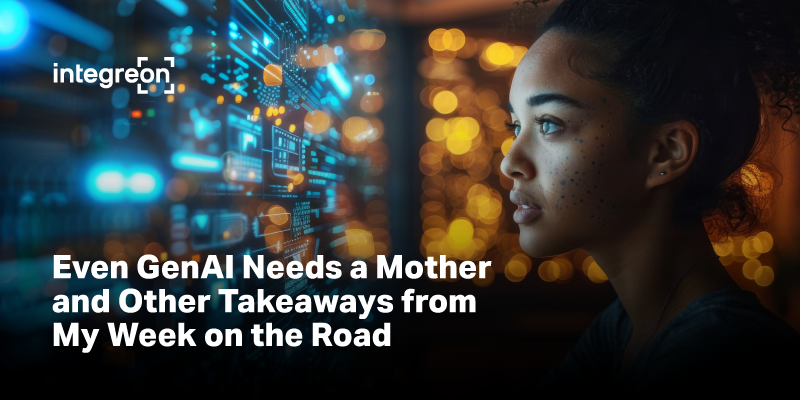The last few weeks have been busy, full of face-to-face meetings that have left me energized and inspired. While our new remote world offers countless benefits, more flexibility, and increased collaboration across time zones, you just can’t beat interacting with people in person. I had the pleasure of attending Relativity Fest in Chicago followed immediately by the Nuix XLR8 conference in London. Both events were fantastic opportunities to reconnect with colleagues, exchange ideas, and explore the future of our industry.
Unsurprisingly, genAI took centre stage at both conferences. It’s an exciting time to be in eDiscovery, and I feel fortunate to be able see the landscape evolve in real time.
As we know, genAI is showing enormous promise in enhancing efficiencies across a range of workflows. That said, as we embrace the evolution of AI technology, we must be mindful of the ethical and moral implications. As humans we must take our responsibility seriously to fully benefit from the true potential of the AI/human partnership. We must respect the power of AI, treat it with care and nurture it as it evolves. Arbitrary guardrails to keep AI on the right path are not enough. One of my favourite quotes from the Nuix XLR8 conference came from the keynote speaker, Liesl Yearsley, “I don’t think GenAI needs a master, I think it needs a mother.” This perfectly captures the need for responsible, thoughtful implementation of AI systems. It’s a powerful tool, but it requires careful oversight and guidance to ensure it is used ethically.
The Future of Human Review
Throughout both conferences, one topic consistently came up in my conversations: the future of human review. Many posed questions to me such as:
- “Do you think human review is on its way out?”
- “Aren’t you worried about GenAI?”
- “Isn’t GenAI causing concern at your company?”
Of course, these are valid questions, and while GenAI is certainly reshaping aspects of the world in which we work, I don’t believe we’re heading toward the extinction of human reviewers. In fact, I see the role of humans evolving rather than diminishing.
Ten years ago, first-level review looked vastly different than it does today, and technology has always played a part in that evolution. As genAI becomes more integrated into eDiscovery, we’ll see smaller, more specialized teams handling tasks that were once more labor intensive. That’s not bad news, it’s growth.
There are three critical components of a successful document review – training, calibration and validation. Humans remain at the core of all three of these components and they are baked into all defensible genAI review workflows. Even in a hypothetical world where genAI is 100% adopted, 100% accurate and is free to use, humans are still needed to design, manage, and oversee the workflow.
One Tool in a Toolkit
It’s important to remember that genAI is just one tool in a broader eDiscovery toolkit. While it will undoubtedly bring efficiencies, it won’t solve every problem. Additionally, as data types and volumes continue to grow, the challenges eDiscovery practitioners face will evolve as well. GenAI might reduce some headaches, but it could also introduce new ones. For instance, prompts being discoverable, will only add fuel to the fire of expanding data types and volumes, bringing with it added complexities across the EDRM.
GenAI being one tool in a broader toolbox is even more important to remember when you look at the wider context of the market and risk tolerance for genAI. Of course, there are some who are fully emersed in all things AI, while at the other end of the spectrum you have some who are very resistant to risk, change and/or technology. Then you have everyone else in the middle, some may have an interest in learning about the power of genAI, but they are happy with long established workflows underpinned by tried and trusted review efficiency techniques. One size does not fit all in the world of litigation, disputes and investigations. It never will.
The Exciting Road Ahead
I expect that we’ll soon start to see litigation about AI in discovery in both the US and the UK that will shape how we move forward as an industry. 2025 is going to be an incredibly interesting year as the courts as legislators tackle genAI, helping us better predict the future eDiscovery landscape.
There’s no question that genAI is here to stay, and it will continue to evolve and improve, while at the same time the cost of use will come down. As we navigate this exciting period of transformation, I’m optimistic about what’s ahead. GenAI is a powerful tool, but the human element remains irreplaceable in ensuring its success. Together, we can harness this technology to create more efficient, effective, and innovative workflows that push our industry forward. GenAI is here to enhance our efficiency and elevate our capabilities, not make us extinct.


